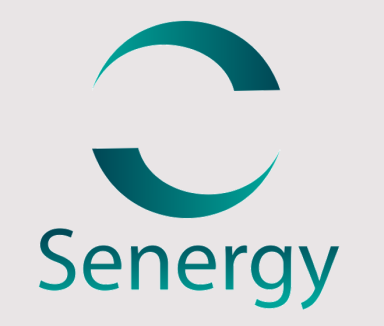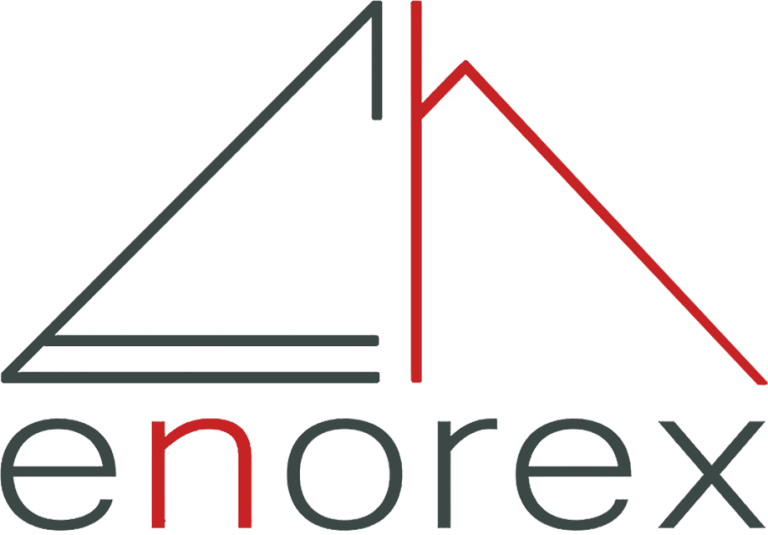GREEN Technology Hub:
Innovating for a Sustainable Future
At Senergy, we are proud to introduce our GREEN Technology Hub, a dynamic hub designed to identify, rank, and nurture startups with transformative potential in the fields of energy, water, and health.
By leveraging a rigorous evaluation of technology readiness, we select promising startups poised to shape the future of sustainable innovation, including contributions to net-zero goals.
This initiative reflects our commitment to engineering consultancy that synergises sustainable solutions, enabled by cutting-edge artificial intelligence (AI), while driving economic growth.

Fostering Collaboration
Senergy’s Technology Hub is more than a selection platform—it’s a collaborative ecosystem where startups, industry experts, and our multidisciplinary team converge.
By promoting partnerships and knowledge sharing, we facilitate the development of innovative solutions that address global challenges, including net-zero transitions.
Our AI-driven insights and industry expertise provide startups with the tools and guidance needed to refine their technologies, accelerate market entry, and achieve scalability.
This collaborative environment fosters a culture of co-creation, enabling startups to benefit from Senergy’s extensive network and resources.
Driving Sustainability and Economic Growth
The GREEN Technology Hub is strategically positioned to deliver impactful innovations that align with Senergy’s sustainability objectives, including efforts toward net-zero emissions where relevant.
Whether optimising oil and gas operations with digital twins, enhancing water resource efficiency with predictive analytics, or advancing health technologies through smart systems, our selected startups contribute to a greener, more resilient future.
Simultaneously, these innovations fuel economic growth by creating new markets, generating employment opportunities, and attracting investment. This dual focus ensures that sustainability and prosperity go hand in hand.
The GREEN Technology Hub employs a structured approach to rank startups based on their Technology Readiness Level (TRL), assessing their innovations' maturity, scalability, and viability.
We prioritise startups demonstrating groundbreaking technologies in areas such as next-gen AI and digitalisation, renewable energy, resilient water management, and emerging health solutions, with an emphasis on those supporting net-zero carbon initiatives where applicable.
Through a meticulous review process, we accept only those with the most promising future, ensuring a portfolio of high-impact ventures ready to collaborate and thrive within our ecosystem.
Technology 1: Senergy AI Agents Platform
Intelligent Agents, Enhanced Energy Insights
Here we outline how we are designing our next-generation AI Agents for Reservoir Engineers, Geoscientists, and broader Energy applications. Our vision is to create intelligent partners that augment human expertise, streamline complex workflows, and unlock new efficiencies, not just for our internal projects but as a leasable service to the wider energy industry.
Our design philosophy is rooted in creating modular, adaptable, and human-centric AI agents. We're not building monolithic black boxes; instead, we're architecting a suite of specialized yet interconnected agents that can collaborate and be customized for specific client needs.
Here’s a breakdown of our architectural approach and how these agents are designed:
I. Core Architectural Principles for Senergy AI Agents:
Modular Micro-Agent Design:
- Instead of one giant "Reservoir Engineer Agent," we're designing a constellation of micro-agents, each specializing in a core task (e.g., "History Matching Agent," "Production Forecasting Agent," "EOR Screening Agent," "Seismic Facies Classification Agent," "Predictive Maintenance Agent for Turbomachinery"). This allows for flexibility, easier updates, and the ability for clients to lease only the specific agent capabilities they need.
- These agents are built on a microservices-like architecture, enabling them to be deployed, scaled, and updated independently.
Layered Intelligence:
- Data Ingestion & Processing Layer: Agents are equipped with robust connectors to diverse data sources (seismic volumes, well logs, production databases, sensor data, geological reports, market data). This layer handles data cleaning, validation, normalization, and feature engineering. Our experience with tools like Interactive Petrophysics (historically) informs our understanding of the complexities of petrophysical data.1
- Core AI/ML Model Layer: This is where the specialized intelligence resides. We employ a range of models:
- For Geoscience & Reservoir Engineering: Deep learning (CNNs for seismic/image analysis, RNNs/LSTMs for time-series production data), physics-informed neural networks (PINNs) to integrate domain knowledge with data-driven approaches 5, spatio-temporal learning (as demonstrated in our Malaysian field study 7), and advanced statistical methods.
- For Energy Systems: Anomaly detection algorithms, optimization solvers, reinforcement learning for control systems, and forecasting models.
- Knowledge & Reasoning Layer: Agents leverage knowledge graphs built from industry literature, internal project data, and client-specific information. This allows them to understand context, infer relationships, and provide more nuanced recommendations.8
- Interaction & Orchestration Layer: This layer manages how users interact with the agents (e.g., natural language interfaces, dashboards) and how different micro-agents collaborate on complex tasks.8 An "Orchestrator Agent" can coordinate a workflow, for example, by having a "Seismic Interpretation Agent" feed results to a "Reservoir Modeling Agent."
Human-in-the-Loop (HITL) & Explainability (XAI):
- Our agents are designed to be assistants, not replacements. Critical decision points always involve human oversight.
- We are incorporating XAI techniques to provide transparency into how agents arrive at their conclusions, building trust and allowing experts to validate (or correct) the AI's reasoning.5
Data Security & Governance:
- Multi-tenancy for leased agents is designed with strict data isolation and security protocols from the ground up.
- Compliance with industry data standards and client-specific governance requirements is paramount.
Scalability & Interoperability:
- Cloud-native design for scalability, but with edge capabilities for real-time, on-site processing where needed (e.g., drilling optimization agents).9
- APIs for seamless integration with existing client software ecosystems (e.g., Petrel, GOCAD, OSIsoft PI).
II. Designing Specific Agent Categories:
Reservoir Engineer AI Agent Suite:
- Objective: To accelerate and enhance reservoir characterization, simulation, and management.
- Key Micro-Agents & Functionalities:
- Automated History Matching Agent: Leverages ML to rapidly iterate through simulation parameters, learning from dynamic production data to achieve faster and more robust history matches, similar to the approach in our complex field study.7
- Production Forecasting & Uncertainty Quantification Agent: Uses probabilistic models and ML to generate production forecasts with associated uncertainty envelopes.
- Enhanced Oil Recovery (EOR) Screening Agent: Analyzes reservoir properties, fluid characteristics, and economic parameters to recommend optimal EOR methods.10
- Well Placement Optimization Agent: Uses geospatial data and simulation outputs to suggest optimal locations for new wells.
- Reservoir Surveillance Agent: Continuously monitors production and injection data to identify deviations from expected performance and flag potential issues (e.g., water breakthrough, injectivity decline).
Geoscientist AI Agent Suite:
- Objective: To expedite data interpretation, reduce uncertainty in subsurface understanding, and identify new exploration opportunities.
- Key Micro-Agents & Functionalities:
- Intelligent Seismic Interpretation Agent: Automates tasks like fault detection, horizon tracking, and seismic facies classification using computer vision and deep learning.5
- Automated Well Log Analysis Agent: Interprets standard well logs to determine lithology, porosity, permeability, and fluid saturation, learning from vast datasets and expert-labeled examples.5
- Basin Modeling & Petroleum Systems Agent: Integrates geological data to model source rock maturation, hydrocarbon migration, and trapping mechanisms.
- Geospatial Data Integration Agent: Fuses various datasets (maps, remote sensing, seismic, well data) to create comprehensive subsurface models.
- Geological Report Summarization & Query Agent: Uses NLP to extract key information from unstructured geological reports and answer natural language queries.8
Energy Systems AI Agent Suite (Broader Applications):
- Objective: To optimize energy production, transmission, distribution, and consumption, and enhance safety and sustainability.
- Key Micro-Agents & Functionalities:
- Predictive Maintenance Agent: Analyzes sensor data from equipment (e.g., turbines, pumps, transformers) to predict failures and optimize maintenance schedules.12
- Process Optimization Agent: Monitors and adjusts operational parameters in real-time for facilities like refineries, LNG plants, or renewable energy farms to maximize efficiency and yield.10
- Energy Demand & Supply Forecasting Agent: Predicts energy demand and renewable generation to optimize grid balancing and energy trading.13
- Emissions Monitoring & Reduction Agent: Tracks emissions data and suggests operational changes to minimize environmental footprint, supporting ESG goals.10
- Pipeline Integrity Agent: Monitors pipeline sensor data for anomalies, predicting potential leaks or integrity issues.9
III. Facilitating Work & Leasing Model:
- Augmenting Expertise: These agents act as tireless assistants, handling data-intensive and repetitive tasks, allowing human experts to focus on higher-value interpretation, strategic decision-making, and innovation.5 They can rapidly generate scenarios, highlight anomalies, and provide data-driven insights that might be missed by manual analysis alone.
- Internal Application & Refinement: We first deploy and rigorously test these agents on Senergy's own consultancy projects and through our Senergy Technology Hub's validation processes.10 This ensures they are robust, practical, and deliver real-world value. Our extensive experience in complex projects, like those detailed in the provided images (e.g., Deepwater Management, Oil Rim Development, Data Analytics for RF improvement), serves as the proving ground.
- Leasing to Other Energy Companies (Agent-as-a-Service):
- Subscription Model: Clients can subscribe to specific micro-agents or suites of agents based on their needs.
- Customization & Fine-Tuning: While core agent intelligence is pre-trained, we offer services to fine-tune models on client-specific data for enhanced performance and to adapt workflows to their unique operational environments. This aligns with our "bespoke" solutions promise.11
- Secure Cloud Platform: Agents are typically hosted on a secure cloud platform, ensuring scalability and accessibility. On-premise or edge deployments can be arranged for specific needs.
- API Access: We provide APIs for clients to integrate agent functionalities into their existing software tools and workflows.
- Consultancy Wrap-Around: Our expert AI engineers and domain specialists (geoscientists, reservoir engineers) work closely with clients to ensure successful deployment, integration, and value realization from the leased agents. This combines our AI products with our established consultancy strengths.10
By designing these AI agents with a clear architectural vision and a flexible deployment model, Senergy aims to empower not only our own teams but also the broader energy industry to navigate the complexities of the modern energy landscape with greater intelligence, efficiency, and sustainability.
Partnerships
Partnerships play a crucial role in the success of the GTH and are vital for Senergy and its clients.
By facilitating technology transfer, enhancing capacity building, providing access to advanced facilities, promoting sustainable growth, and creating a global network of innovators, these collaborations pave the way for a future where technology and innovation drive progress and development across borders.
Enhancing Capacity Building
Through its bespoke service offering, including tailored training courses and interactive workshops, GTH leverages partnerships to enhance the professional capacity of individuals and organizations in developing countries. These educational initiatives are designed not just to transfer knowledge but to build a foundation for ongoing innovation and self-sufficiency.
Access to State-of-the-Art Facilities
GTH's exclusive tours of laboratories and manufacturing lines offer a unique opportunity for professionals and decision-makers from developing nations to gain firsthand experience with the latest technologies in action. Partnerships with these facilities not only showcase the potential of modern energy solutions but also inspire new ideas and approaches to addressing local challenges.
Promoting Sustainable Growth
The strategic partnerships formed through GTH are aligned with the goal of sustainable growth. By connecting stakeholders across different regions and sectors, GTH fosters a collaborative ecosystem where shared challenges can be addressed through innovative solutions, ensuring that growth does not come at the expense of the environment or future generations.
Creating a Network of Innovators
GTH acts as a catalyst for building a global network of innovators, entrepreneurs, and thought leaders. This network is crucial for the exchange of ideas, best practices, and success stories. Partnerships within this network amplify the impact of individual efforts and create a synergistic effect that can lead to breakthroughs in technology and sustainable practices.
Here is the list of our partners:

We need your consent to load the translations
We use a third-party service to translate the website content that may collect data about your activity. Please review the details in the privacy policy and accept the service to view the translations.




